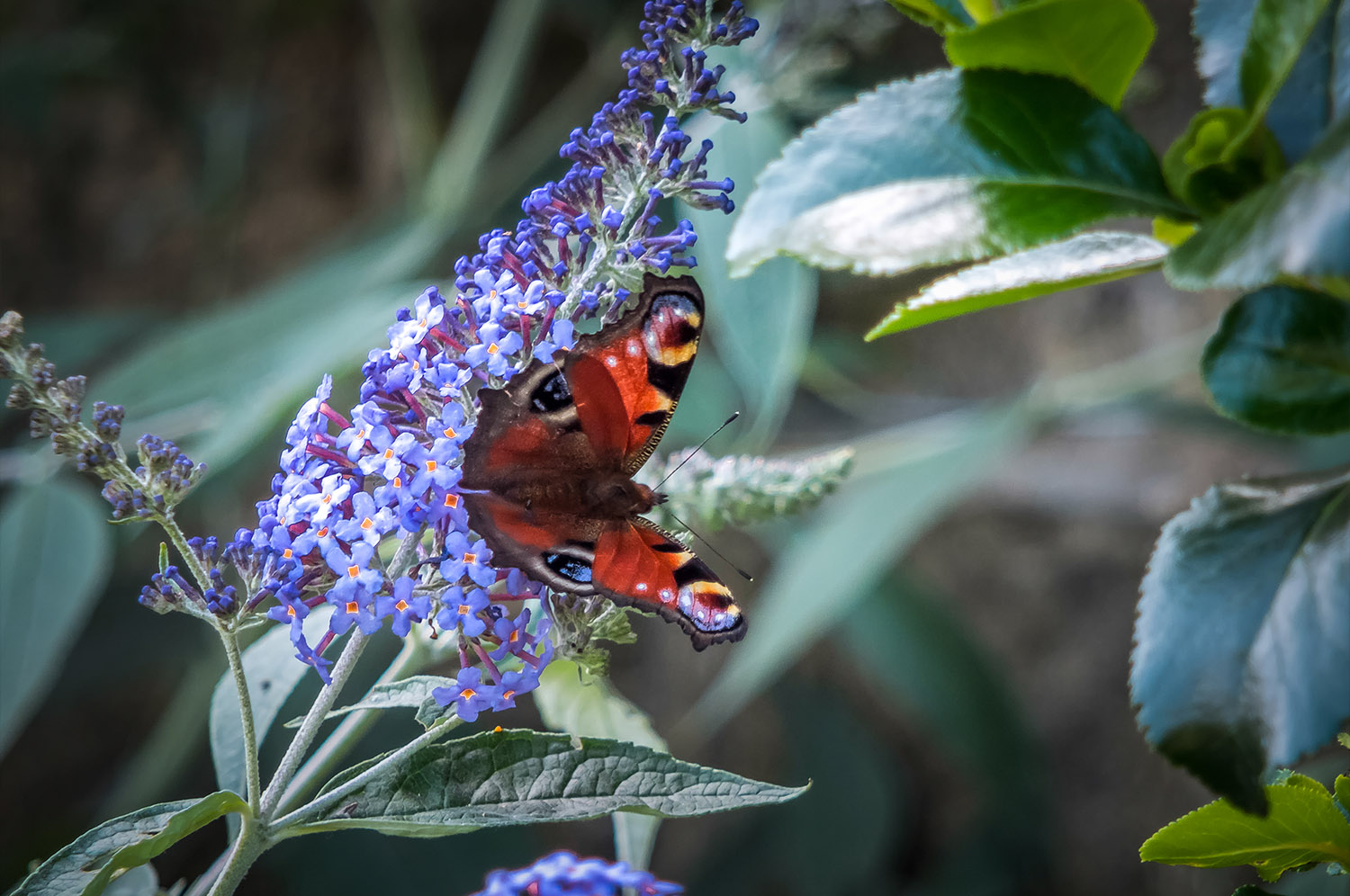Plants to attract wildlife
Natural habitats for many wildlife species are on the decline, but landscapers can help redress the balance.
Why is it worthwhile attracting wildlife?
Wildlife has been on the decline in the UK for more than fifty years. Human endeavours such as agriculture and urbanisation have resulted in habitat loss, pollution, climate change and other issues damaging to wildlife populations. Some groups have been affected particularly hard, such as mammals, 26% of which are now at risk of extinction.
The good news is that landscapers can help. POS and SANGs are obvious examples of areas in which wildlife-friendly planting can have an impact, but even commercial and residential landscapes offer opportunities to make a difference.
Not only can landscaping decisions play their part in maintaining biodiversity and reversing species declines by creating their own stable ecosystems full of micro-habitats, but attracting wildlife has other benefits, too. Connecting to nature has a wealth of advantages for people’s wellbeing. Kevin Gaston, who headed up the BUGS project (investigating the biodiversity and habitats in gardens in Sheffield), found that residential landscapes ‘increase people’s positive engagement with wildlife. Something that has come through in recent years is the health and well-being impacts of interacting with nature.’ He argues that ‘wildlife gardening has benefits … that transcend the wildlife itself.’
This and similar research (along with the impact of Covid-19) means that the landscaping and building industries increasingly recognise the need for open spaces to promote both wellbeing and biodiversity. So, even from a business perspective, landscape designs which prioritise wildlife are likely to be well received at tender.

A healthy ecosystem includes a huge variety of insect life. Many native plants provide vital protection and food for them.
Mix it up
One of the best things you can do when planting for wildlife is to use a wide variety of plants. ‘Introduce more three-dimensional complexity,’ says Gaston, ‘vegetation of different types and different forms.’ A bigger range of plants means different food and shelter sources for a greater number of species.
If you attract more species of beneficial insects, this in turn attracts more bird and animal life – and greater diversity also acts as natural pest control, creating balance between the ‘good’ and ‘bad’ organisms and removing the need for excessive chemical pesticides.
Going native
Embracing native plants is a winner from all angles. These plants are often easier and more cost-effective to source, are well adapted to the climate and conditions, and create wonderfully symbiotic habitats in tandem with other native plant species. They tend to be relatively low maintenance – and a good selection will reduce watering and weeding requirements even further.
With so many landscaping advantages, there’s no need to select native shrubs and trees simply to attract wildlife, but the ecological benefits are many. Native plants provide berries and seeds for birds and small mammals, in addition to caterpillar food plants for a variety of moths.
Helpful habitats
If your development and brief allows for it, consider adding features that will act as important habitats, such as a pond, a log pile or stumpery, bug and bee ‘hotels’, and an area of long grass.
Ponds alone – however small – are enormously beneficial to a great number of species, providing a reliable source of water in addition to being diverse habitats in their own right, not least for the six native UK amphibians. These include common frogs, smooth newts and common toads, all of which make good natural pest controllers, feeding on a variety of invertebrates. Several of these are threatened species due to habitat loss – the common toad’s numbers have fallen by 68% in recent years, making it less common than its name implies. Ponds also attract many insects – even stunning dragonflies in summer – who in turn create a valuable food source for bats.
Habitats that include dead wood and various nooks and crannies are perfect for an incredible variety of species, from creepy crawlies and solitary bees to amphibians and even hedgehogs. In POS and SANGs, incorporating log piles and bug hotels may be relatively simple, but these less manicured habitats don’t always fit a formal residential or commercial brief. However, green considerations are increasingly taken into account by building contractors, and there are ways to bring incorporate habitats into even the fanciest development.

UK mammals are in serious decline due to habitat loss, and judicious planting by landscapers can help their recovery.
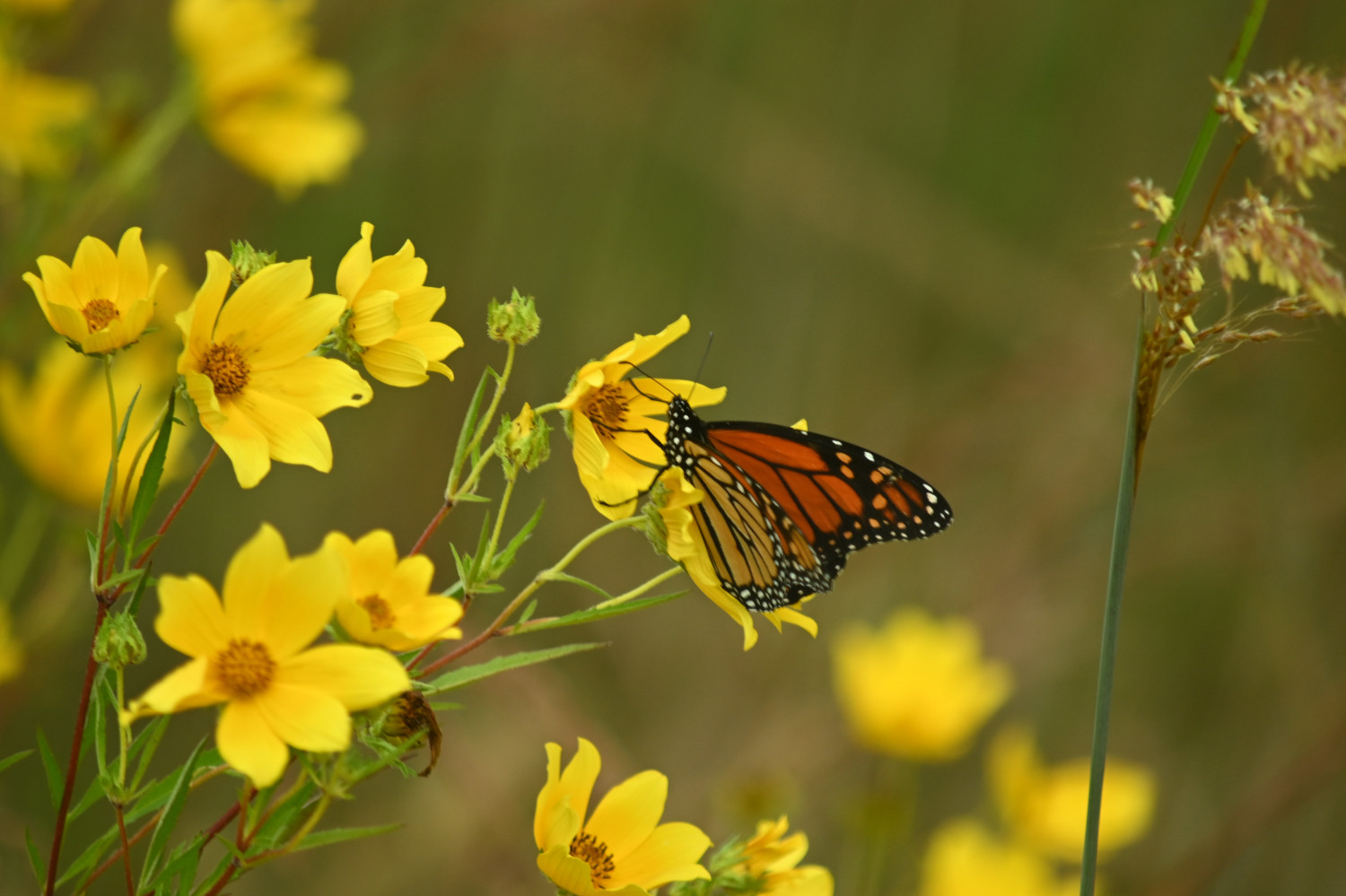
A wildflower meadow is a simple, attractive way to include rewilding within a landscape.
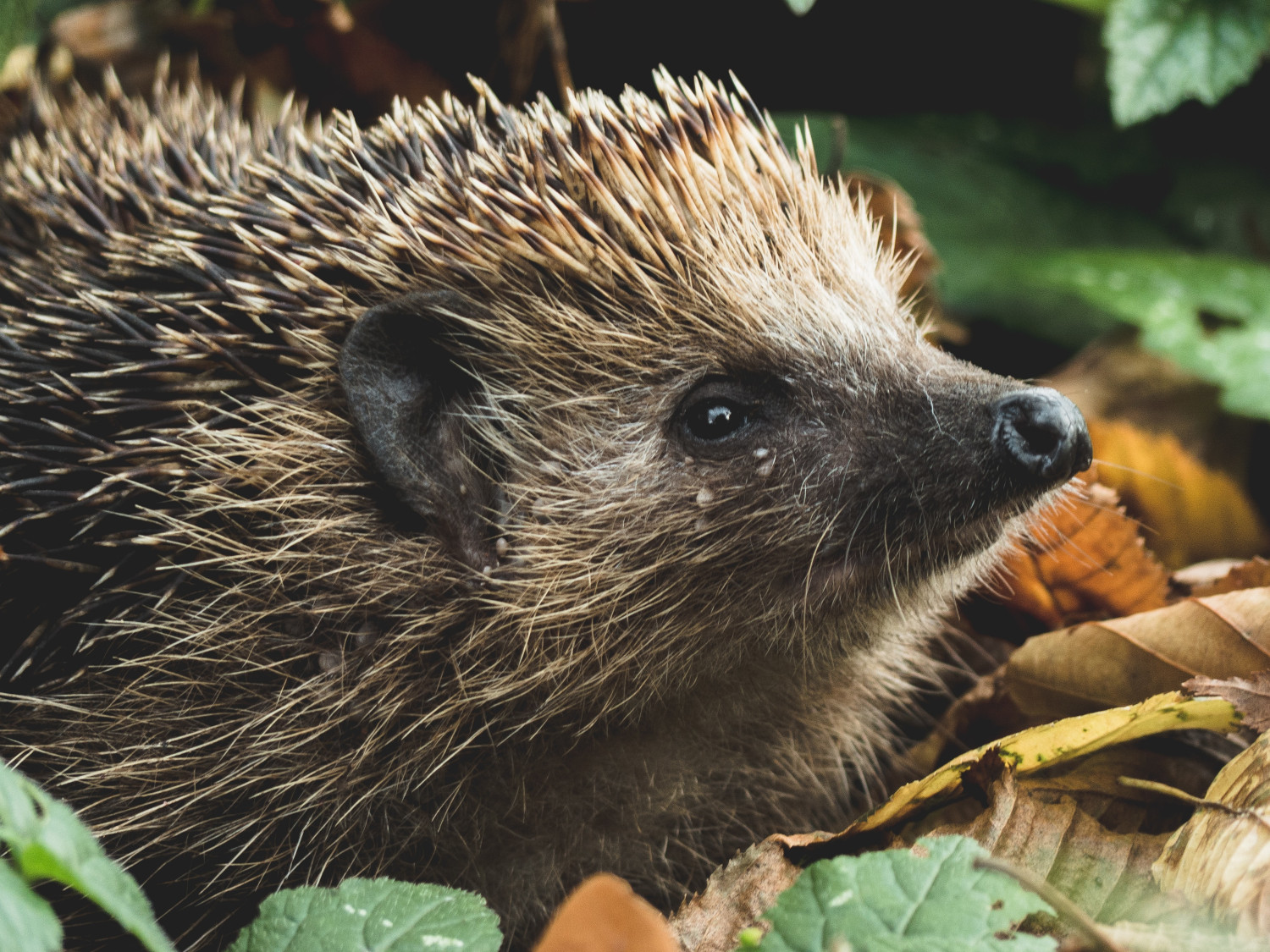
Wildlife passageways help hedgehogs and other animals to access food and shelter. Photo by Tadeusz Lakota on Unsplash
Rewilding
Rewilding refers to the process of restoring a landscape to a natural state, and to reintroducing species (both plant and animal) that have been eliminated. Having areas dedicated to rewilding, or whole planned natural landscapes, is becoming increasingly desirable in soft landscaping.
For some projects, a simple wildflower meadow may be the extent of rewilding. Where a full landscape is involved, hardscaping features and functionality are woven alongside natural native plantings. This integration requires greater depth of structural and creative planning.
Wildlife passageways
Although one of the UK’s best-loved mammals, the hedgehog is at particular risk, with a shocking 95% decline in numbers since the 1950s. Landscapers have an almost unique opportunity to help our spiny (and other!) friends survive, by creating ‘wildlife passageways’. By providing gaps in boundaries, landscapers can help to protect or recreate large route networks across communities for wildlife. These are vital for them to be able to source enough food, find shelter and locate potential mates.
Hedgehogs often travel up to 2km in a single night, and need freedom of movement to thrive as a species. They, in turn, provide natural pest control with their taste for slugs and snails! Frogs and toads, too, need to be able to migrate during breeding season, and play their part in balancing the local ecosystem.
Which plants attract wildlife?
The various categories of plants all have something to offer wildlife of different species and sizes – from shelter to food. Here are some varieties within each grouping to employ in landscaping projects.
Trees
Greenwood has already looked at the myriad ways in which trees help birdlife, providing food and protection. But insects and other animal life are also beneficiaries.
There are native trees to suit every type of soil and condition, each a unique environment that will provide nourishment and protection for various species. There are far too many to include here, but some to consider for your landscapes include:
Common alder (Alnus glutinosa)
This tree is ideal for clay soils and can endure waterlogging better than most, while providing a home and sustenance to at least 90 insect species and birds such as siskins and redpolls. It also works as a hedging plant.
Crabapple (Malus sylvestris)
This tree is not only a decorative home to many insect species, with its pretty pink or white spring blossoms, but its fruit is a favourite of some of the UK’s favourite mammals, including badgers and foxes.
Rowan (Sorbus aucuparia)
This lovely tree works well in exposed spots, and its attractive orange-coloured autumn berries help to feed small mammals such as hedgehogs, as well as birds. Its fragrant spring flowers attract various insects.
Silver Birch (Betula pendula)
This tree not only creates year-round interest with its stunning silver-white bark, it also plays host to a whopping 229 insect species. Mature trees are also home to bracket fungi and woodpeckers, while its seeds are a valuable food source for small mammals and birds in the winter months.
In short, any wise selection of native trees – particularly when a judicious mix of broadleaf, evergreen and fruit trees at different heights are included – will delight both wildlife and observers.
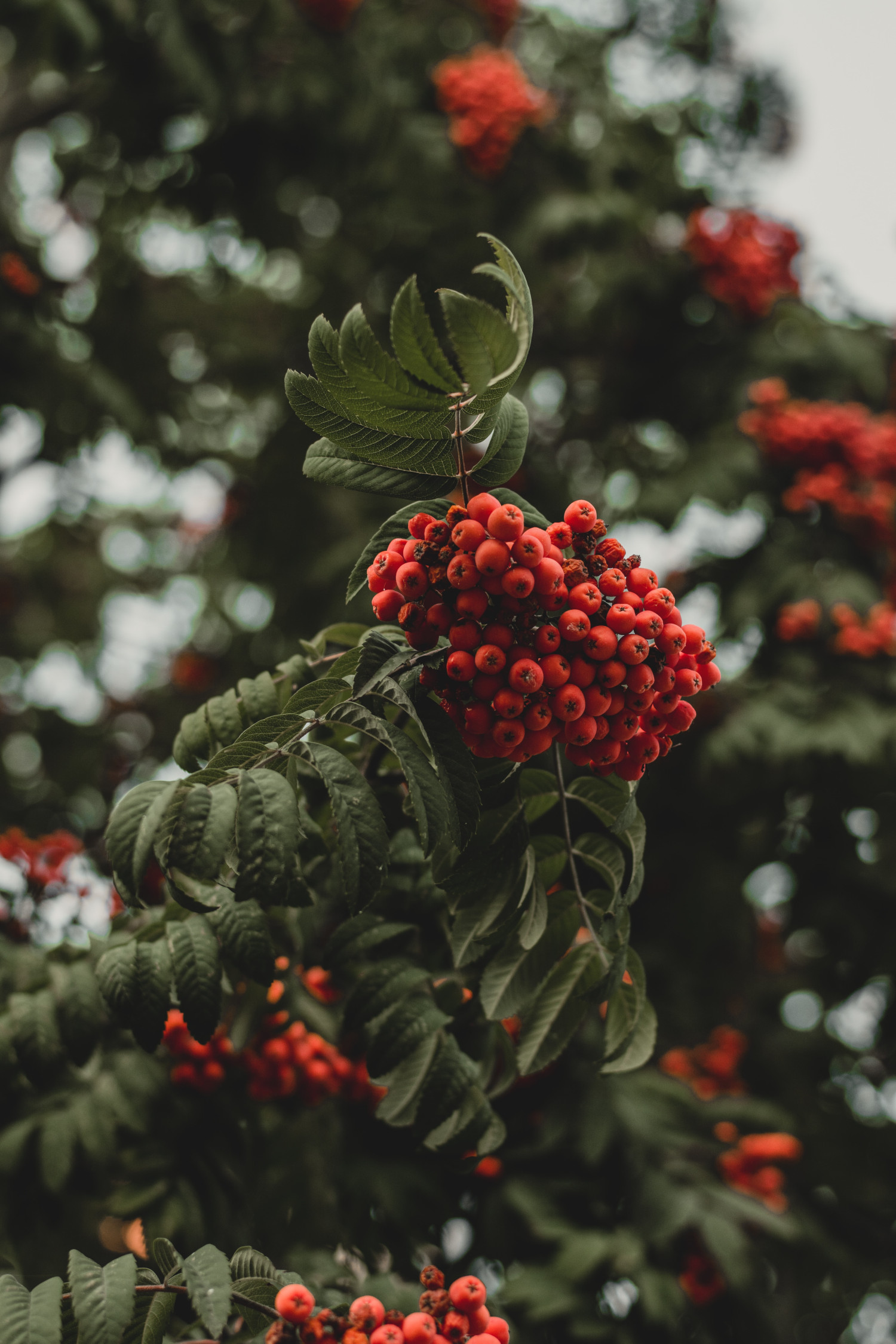
The orange-red berries of the rowan tree are food for hedgehogs and birds. Photo by Irina Iriser on Unsplash
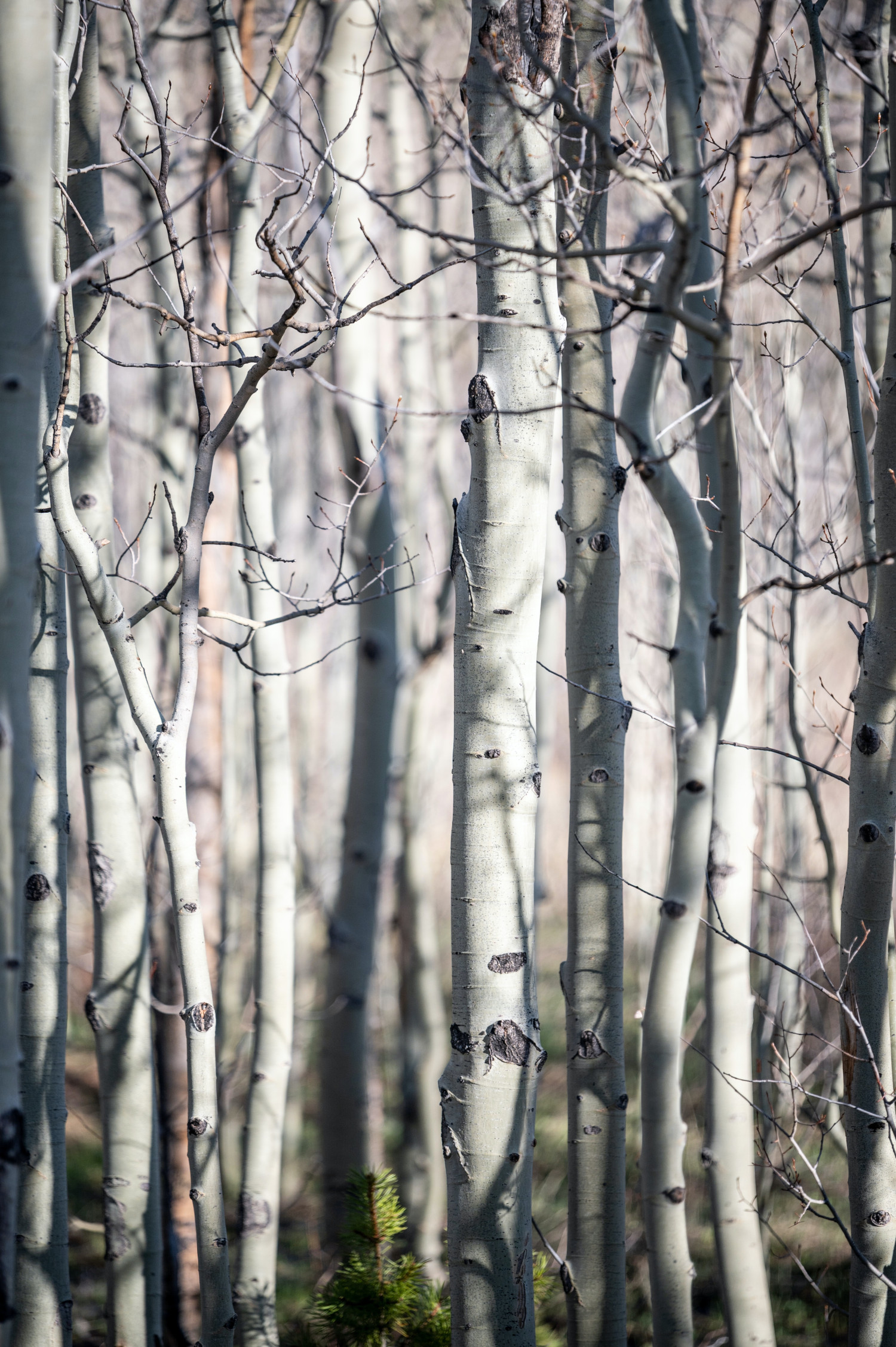
Silver birch is a home to woodpeckers, and provides food for many birds and mammals. Photo by Peter Pryharski on Unsplash
Shrubs and hedging plants
Shrubs and hedging plants are the backbone of many landscapes, and both make wonderful habitats for wildlife of all descriptions.
Bees and insects love the creamy lace-like flowers of the guelder rose (Viburnum opulus), while its autumn berries provide food for birds and small mammals. Buddleia (Buddleia davidii) is the classic shrub for attracting butterflies, and it also boasts beautiful, fragranced violet flowers. Common dogwood (Cornus sanguinea) provides wonderful winter colour, spring flowers for insect life, foliage to feed the green hairstreak butterfly, and purple-black autumn berries loved by birds and mammals.
For native hedging, beech (Fagus sylvaticus) and blackthorn (Prunus spinosa) are great options. Beech is a winter food store for a huge array of birds, from tits to nuthatches, as well as squirrels and mice. Blackthorn is the main egg-laying site for black hairstreak butterflies, and its thorny branches shield nesting birds. Its attractive white spring blooms feed insects, and its purplish sloes feed mammals and birds in autumn.
Hawthorn (Crataegus monogyna) creates seasonal colour for landscapes with fragrant white spring flowers, and bright red winter berries. Redwings and fieldfares dine on the latter, while the foliage feeds various moth species. The flowers attract insects, and almost 150 species are associated with hawthorn.
Hazel (Corylus avellana) appears in mythology as a magical tree. While it may not really be lucky to carry its nuts, they make great food for birds and mammals, and its autumnal colour brings golden shades to a landscape. It even provides nesting spots for the rare dormouse.
Choosing a mixture of native hedging plants can be even more beneficial for wildlife than single species planting.
Flowering plants and herbs
Flowers are an obvious pull for pollinators, so the choice of flowering plants is immense. Some that we particularly recommend for their wildlife credentials include primrose (Primula vulgaris), whose delicate pale yellow flowers are a wonderful sign of spring, and an early source of nectar for bees. Their leaves also feed Duke of Burgundy and Fritillary butterflies – as do violets (Viola odorata).
Goldenrod (Solidago virgaurea) is a flexible flower that grows in most soils, while foxglove’s stately violet spires (Digitalis purpurea) thrive in shade. Both attract many varieties of insects. Wallflowers (Erysimum cheiri) are a great choice for poor soils. Their nectar feeds many insects in spring, and their seeds provide sustenance for birds. Cornflower (Centaurea cyanus) also has seeds that sustain birds, while its summer blooms attract hoverflies and parasitic wasps.
Meanwhile, herbs are always a fantastic choice for a landscape, bringing both fragrance and colour, and fulfilling functions from informal hedging to feature plants. Wildlife-wise, the tiny blue flowers of sage (Salvia officinalis), beautiful blue blooms of borage (Borago officinalis), and purple flowers of thyme (Thymus vulgaris) and lavender (Lavandula angustifolia) all attract a range of pollinators, including bees, butterflies and hoverflies.
Climbers and creepers
Climbers not only look beautiful – they are incredibly useful for wildlife. Birds can nest in them, butterflies can hibernate in them and bees can take shelter from the rain. What’s more, climbers are a fantastic option for creating coverage for fences and walkways.
A climbing plant transforms a bare fence, pergola or trellis into a space for birds to nest, butterflies to hibernate and bees to shelter from the rain. Ivy (Hedera helix), honeysuckle (Lonicera periclymenum), passion flower (Passiflora), jasmine (Jasminum), dog rose (Rosa canina) and wisteria are all wonderful plants for wildlife.
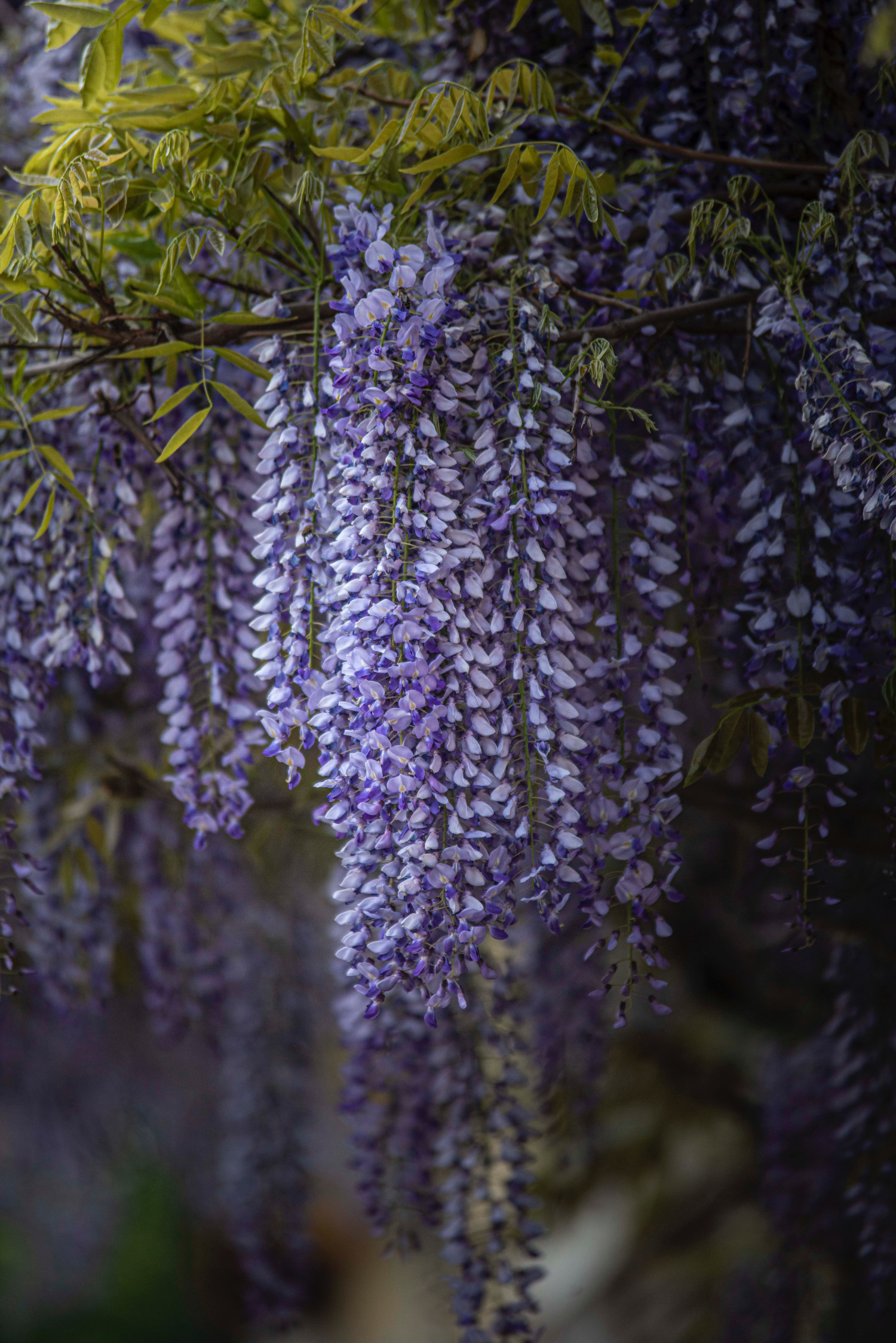
The stunning drooping blooms of wisteria attract various pollinators. Photo by Larisa Birta on Unsplash
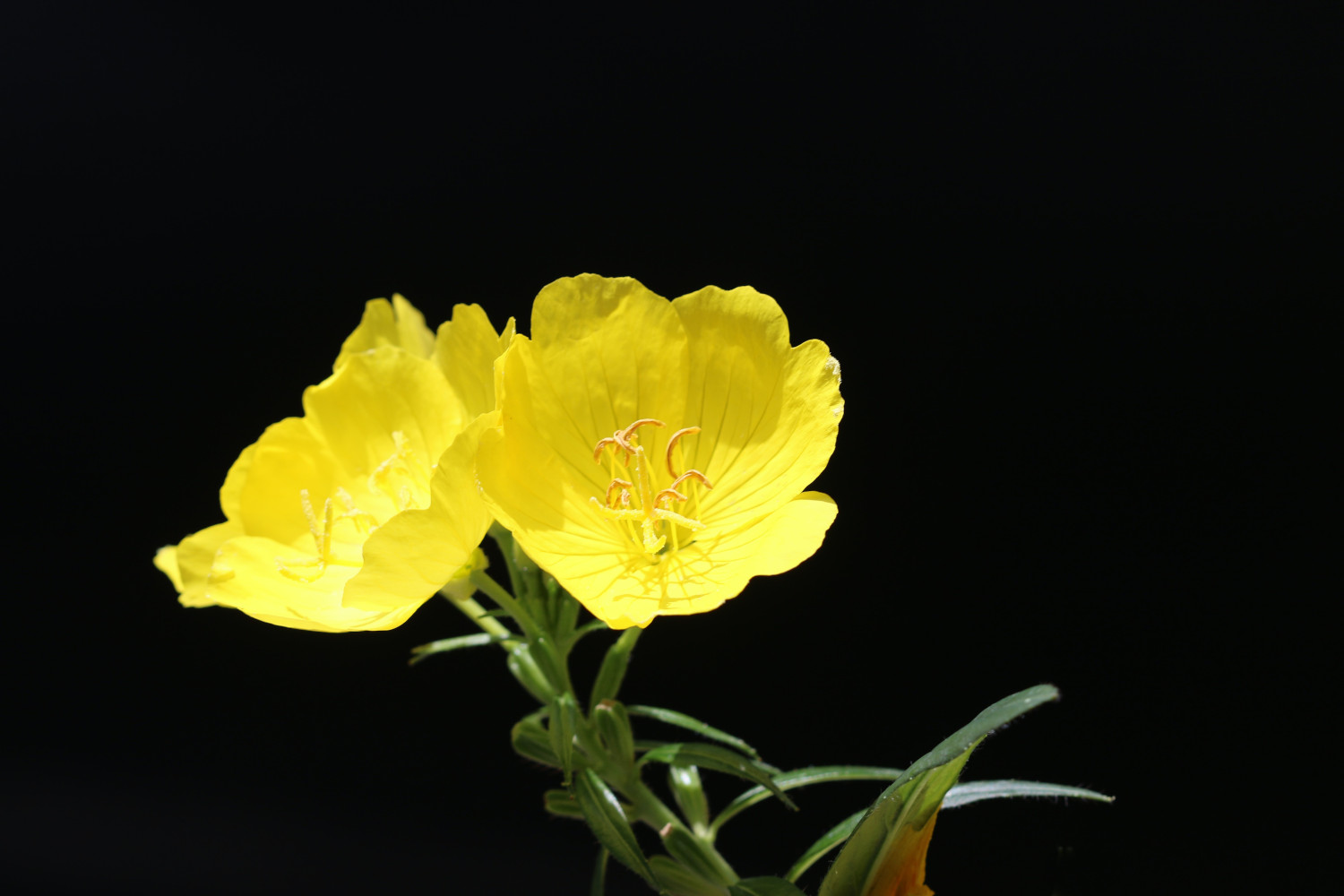
Evening primrose releases its scent at night, attracting bats. Photo by james jeon on Unsplash
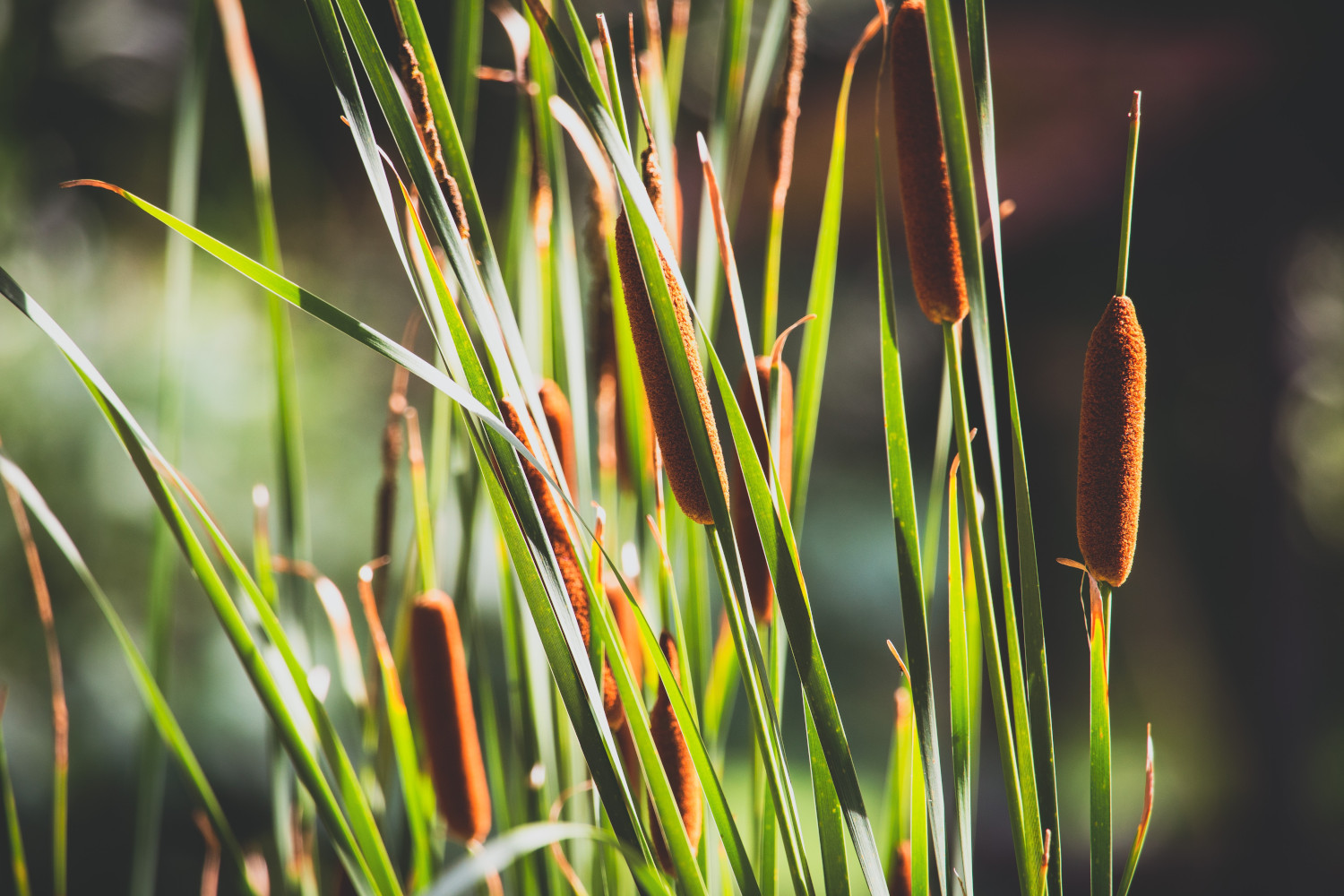
Rushes make attractive marginal plants. Photo by Denny Müller on Unsplash
Plants for night-time visitors
The UK is home to 18 species of bat, and they feed primarily on night-flying insects. Nocturnal pollinating insects are, in turn, attracted by the aroma released by night-blooming flowers. Honeysuckle (Lonicera periclymenum) and evening primrose (Oenothera biennis) are good plants to try.
Plants for a wildlife pond
Like any other ecosystem, a pond needs various elements to function as a healthy habitat and support its inhabitants. It’s best to stick to native plants, and ponds need a mixture of floating, submerged and emergent varieties. Try white water lily (Nymphaea alba), frogbit (Hydrocharis morsus ranae) and ivy-leaved duckweed (Lemna trisulca) for floating plants, aiming to cover around half the pond’s surface in order to keep the water cool and suppress algae growth.
Fully submerged plants help to oxygenate the water and provide shelter for underwater creatures. Try plants such as whorled water-milfoil (Myriophyllum verticillatum), water starwort (Allitriche stagnalis), willow moss (Fontinalis antipyretica), water violet (Hottonia palustris) and marestail (Hippuris vulgaris).
Grow emergent plants around the pond’s perimeter. Try meadowsweet (Filipendula ulmaria), rushes, sedges, water forget-me-not (Myosotis scorpioides) and yellow iris (Iris pseudacorus).
Start working for wildlife
As you can see, there are many easy ways for landscapers to make developments more friendly to wildlife, from pollinators and creepy crawlies to birds and mammals – and any good mix of native plants is a fantastic place to start.
For further advice on selecting plants for a wildlife-friendly landscape, get in touch with the G-Team directly – they are always happy to help. Once you have the inspiration you need, you can get quick and easy quotes with the Tender Tool app.



